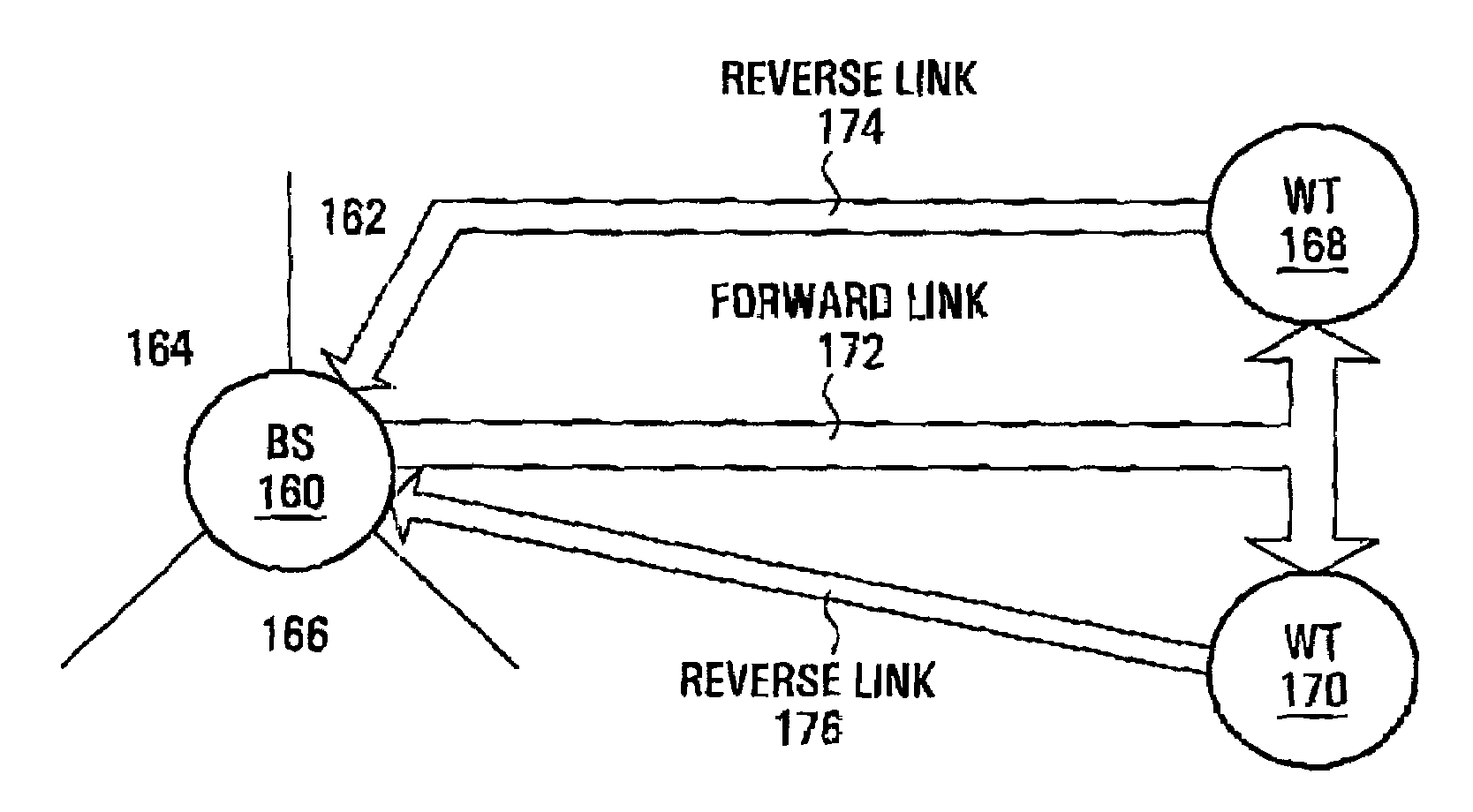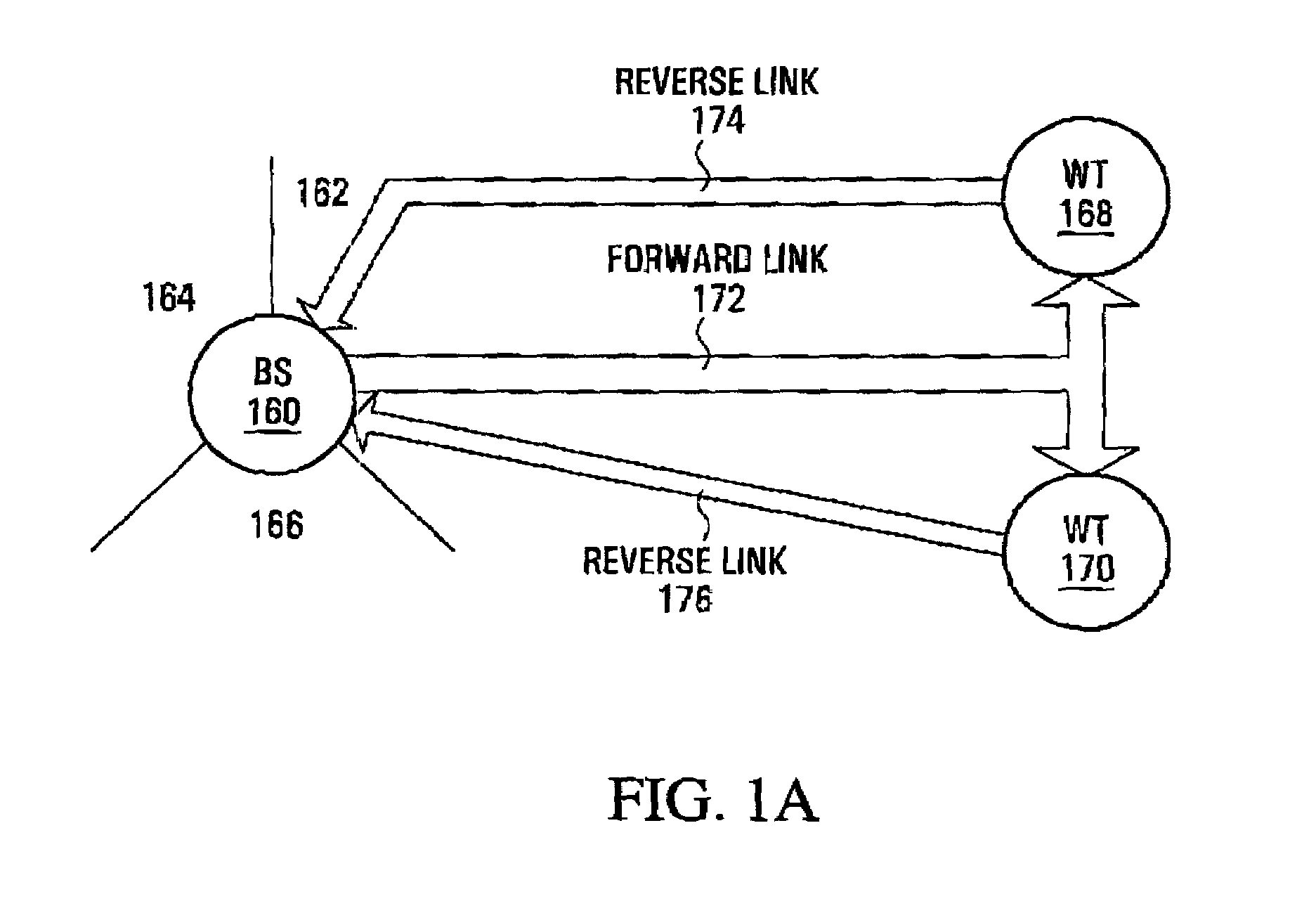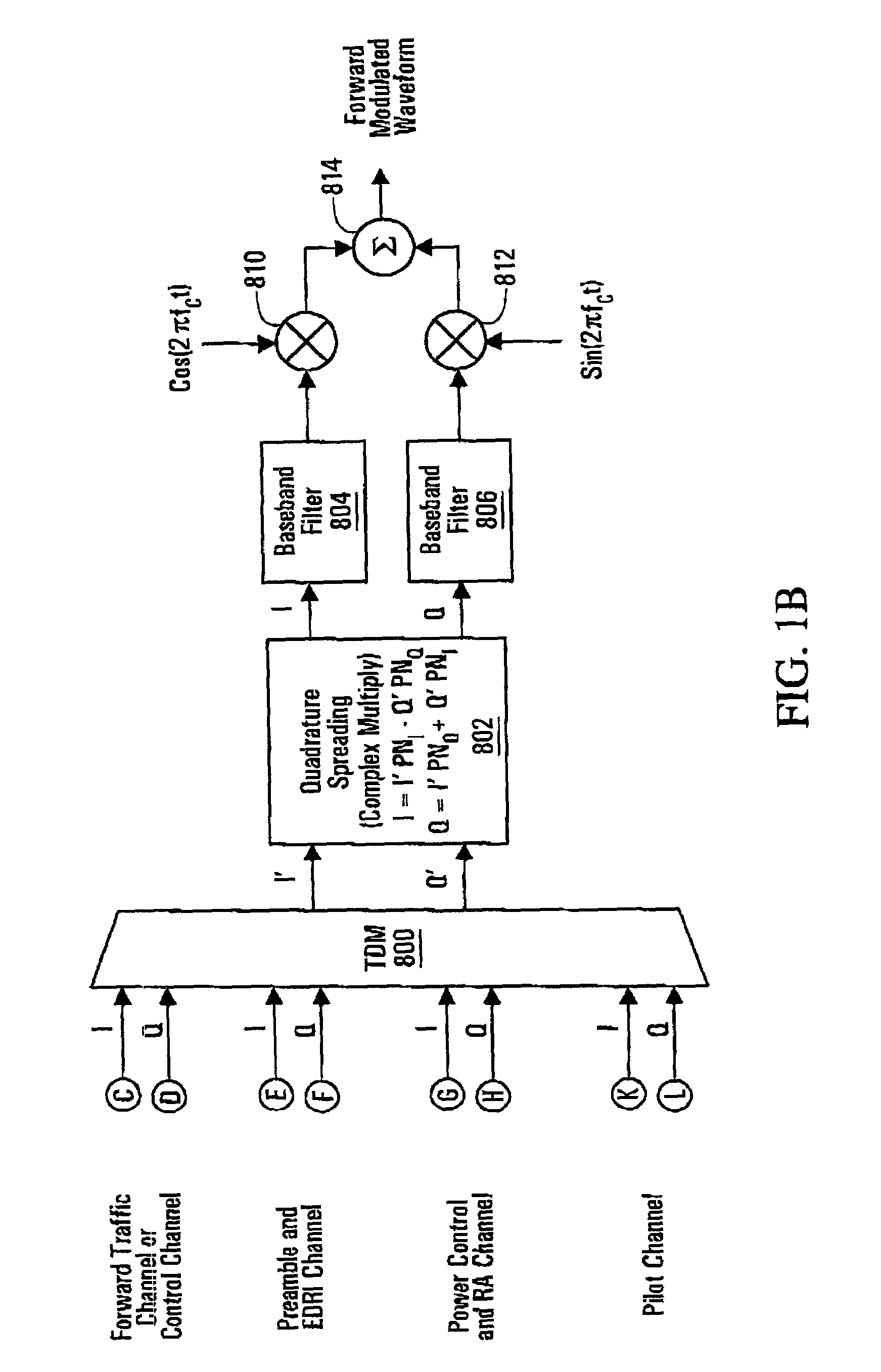Shared channel structure, ARQ systems and methods
a channel structure and channel technology, applied in the field of cdma systems, can solve the problems that the demand for high rates has not been met by the second generation system, and achieve the effect of high data rate technology and cost-effectiveness
- Summary
- Abstract
- Description
- Claims
- Application Information
AI Technical Summary
Benefits of technology
Problems solved by technology
Method used
Image
Examples
case 1
Only Users
[0169]For the voice only users, the position of the ACK or NAK bit is not fixed. Slots 2, 6, 10 and 14 are reserved for RRI. A single RRI bit is mapped to all 4 bit positions to indicate the use of the fundamental channel and dedicated control channel. Setting all four RRI bits to “0” in one frame indicates that there is only fundamental channel being transmitted. Setting all four bits in one frame to “1” indicates that the DCCH and fundamental channel are being transmitted.
[0170]If a user's voice data is decoded correctly, the ACK VARQ signal will be sent to the base station in all the slots in the frame. If nothing was transmitted for the user in a given slot, or if the user's voice data is decoded incorrectly, then a NAK VARQ signal will be sent to the base station. Preferably, a “1” is sent to indicate an ACK, and a “0” is sent to indicate a NAK. The possible positions of the VARQ signals are in slots 3, 4, 7, 8, 9, 11, 12, 13 and 15 of the current frame and slots 0 an...
case 2
and Data users
[0172]The timing of the VARQ for voice plus data users is shown in FIG. 20 indicated generally at 202. In this case, 14 PC bits in one frame will be used for RRI to indicate the rate being used on the reverse supplemental channel. Preferably, each RRI symbol (3 bits) is mapped to a simplex code with a length of seven, repeated twice, mapped to RPI / VARQ locations 0 to 8 and 11–16. The RRI is used to indicate whether the dedicated control channel or supplemental channel or neither is active for the current frame. The three bit RRI symbol can take one of eight values, one value (preferably 0) indicating that there is no DCCH and no supplemental channel, one value (preferably 1) indicating that the DCCH only is being transmitted, and remaining values 2 through 7 indicating supplemental channel only, and indicating a particular rate for the supplemental channel. The rates are detailed below under the discussion of the supplemental channel with reference to FIGS. 22 and 23.
[...
PUM
 Login to View More
Login to View More Abstract
Description
Claims
Application Information
 Login to View More
Login to View More - R&D
- Intellectual Property
- Life Sciences
- Materials
- Tech Scout
- Unparalleled Data Quality
- Higher Quality Content
- 60% Fewer Hallucinations
Browse by: Latest US Patents, China's latest patents, Technical Efficacy Thesaurus, Application Domain, Technology Topic, Popular Technical Reports.
© 2025 PatSnap. All rights reserved.Legal|Privacy policy|Modern Slavery Act Transparency Statement|Sitemap|About US| Contact US: help@patsnap.com



